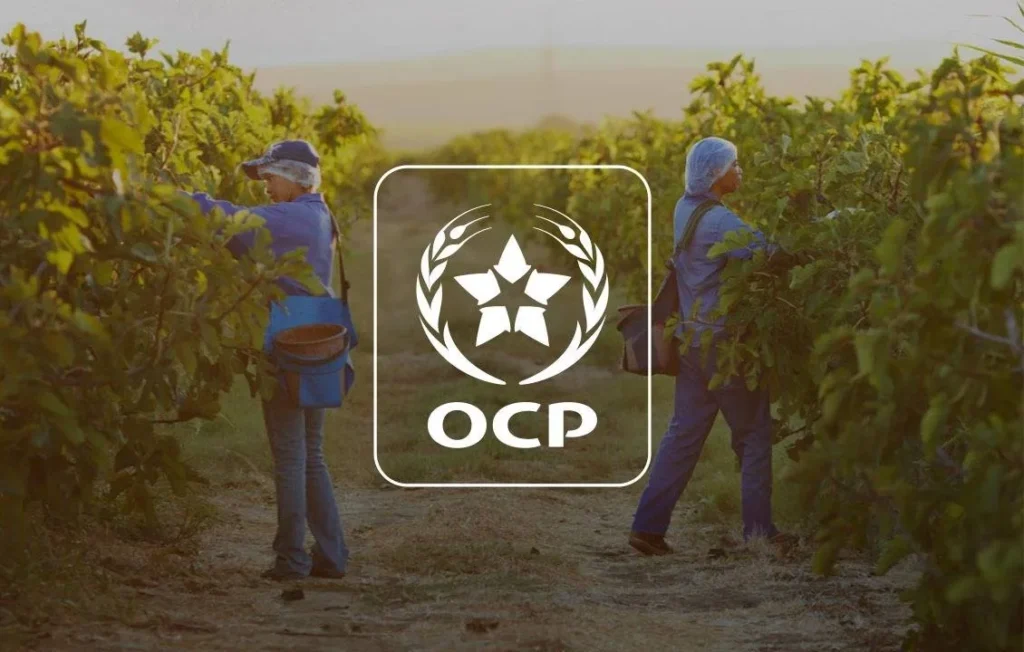Rabat – At this year’s International Agricultural Show in Morocco (SIAM), the OCP Group steps forward as a fertilizer giant, as well as a driver of deep transformation across farming landscapes.
Faced with climate urgency and growing water scarcity, the group builds its presence around a message that feels increasingly vital: Africa’s agricultural future must rely on resilience, inclusion, and science.
OCP does not arrive in Meknes with slogans. It brings a clear structure, soil health, water independence, carbon balance, and community support, anchored in research and delivered through long-term partnerships.
This vision reflects more than institutional ambition. It proves that agriculture can feed and protect at once, but only if reimagined from the ground up.
Soil as the starting point
At the heart of OCP’s strategy lies a deep respect for soil. Instead of offering generic solutions, the Group promotes precision: right source, right rate, right time, right place. This approach moves beyond convention and brings customization to the field.
Through its Nutricrops subsidiary, OCP develops blends adapted to specific crops, regions, and soil types. These are not off-the-shelf fertilizers. They answer real needs, informed by real data.
The research behind this effort spans continents. With support from UM6P and INNOVX, OCP studies soil biology, tests new microbial inputs, and experiments with nanotechnologies. Over 52 million hectares of land have already been mapped, and thousands of tailored formulas now support more sustainable yields across Africa.
A new relationship with water
Morocco’s battle with water scarcity no longer feels abstract. Entire regions face shortages. Farmers feel the pressure every season. In response, OCP launched Green Water, a subsidiary dedicated to producing non-conventional water from desalination and wastewater reuse. It’s not a side project. It’s a lifeline.
Today, OCP’s operations rely entirely on non-conventional water. In Khouribga and Jorf Lasfar, massive infrastructure ensures mining and production continue without drawing from freshwater sources. At the same time, cities like Safi and El Jadida benefit from this shift, gaining access to treated water that once would have been lost.
OCP now works to extend these efforts to more regions, Marrakech, Khouribga, Youssoufia, while providing a replicable model for sustainable agriculture across the continent.
Towards a climate-ready industry
OCP’s climate strategy does not stop at agriculture. It targets the entire production chain. The Group aims for carbon neutrality by 2040, with a first milestone, full Scope 1 and 2 neutrality, set for 2030. Already, over 85% of its energy comes from renewables.
This transition involves more than switching energy sources. It means rethinking products, processes, and priorities. Low-carbon fertilizers, like the Group’s green TSP, form one part of the picture. Circular water systems and solar-powered desalination plants form another. These changes do not happen in isolation. They align with a wider effort to ground OCP’s growth in ecological balance.
Soil as a carbon sink
In Morocco, the Tourba program introduces a new way of thinking about soil as a growing medium and as a living reservoir for carbon. Launched by OCP, Tourba partners with farmers to introduce techniques such as direct seeding and regenerative rotation. The goal is to sequester carbon, restore fertility, and improve yields without chemical overload.
So far, over 2,000 Moroccan farmers have joined the project. UM6P’s soil research plays a critical role here, using spectroscopy to track carbon retention and soil vitality. OCP hopes to extend this model across 6 million hectares by 2030 and remove an estimated 7 million tons of CO2 from the atmosphere every year.
Centering communities
OCP’s long-term bet lies with people. Through programs like Al Moutmir, over 120 agronomic engineers work directly with farmers in more than 40 provinces. They offer more than technical support. They build relationships and trust, key to lasting change.
Initiatives such as ElleMoutmir and MyCOOP support rural women and cooperatives, while Farmer-to-Farmer fosters shared knowledge across regions. In 2024 alone, the OCP Foundation supported close to 90,000 people through agricultural, educational, and social programs.
In Morocco’s southern provinces, the Phosboucraa Foundation carries this vision further, tailoring support to the needs and aspirations of Saharan communities.
OCP does not present itself as a savior of agriculture. It positions itself as a partner, scientific, strategic, and rooted in the long term.
At SIAM 2025, the phosphate giant’s presence stands as a reflection of Morocco’s evolving role in the global agricultural conversation. The challenges are enormous. But the response, if grounded in science and shared responsibility, can open a new chapter, not only for Morocco but for African agriculture as a whole.

